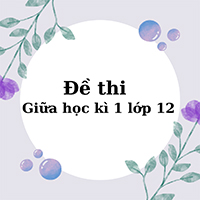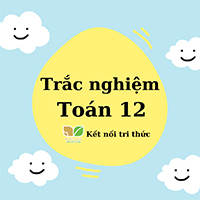Giải bài tập SGK Tiếng Anh lớp 12 Chương trình mới Unit 6: Endangered species
Giải bài tập SGK Tiếng Anh lớp 12 Chương trình mới Unit 6
VnDoc.com xin giới thiệu đến các bạn Giải bài tập SGK Tiếng Anh lớp 12 Chương trình mới Unit 6: Endangered species do VnDoc.com sưu tầm và đăng tải là nguồn tài liệu hay và bổ ích giúp các bạn nắm vững một cách dễ dàng những kiến thức có trong bài. Sau đây mời các bạn vào tham khảo.
Bài ôn tập Tiếng Anh lớp 12 Unit 7, 8 có đáp án
Tổng hợp toàn bộ từ vựng Tiếng Anh lớp 10-11-12 chương trình mới
Giải bài tập SGK Tiếng Anh lớp 12 Chương trình mới Unit 5: Cultural identity
Skills - trang 10 Unit 6 SGK tiếng anh 12 mới
Tổng hợp các bài tập trong phần Skills - trang 10 Unit 6 SGK tiếng anh 12 mới
READING
Saving endangered species: pros and cons
1. Discuss with a partner. (Thảo luận với một người bạn)
1. Which of these animals are on the list of endangered species? (Những loài động vật nào nằm trong danh sách các loài bị đe dọa?)
dolphin
tiger
saola
elephant
sea turtle
giant panda
2. Can you find them in Vietnam now? (Bạn có thể tìm thấy chúng ở VN hiện nay không?)
Đáp án:
1. Tigers, saolas, elephants, sea turtles, and giant pandas are on the list of endangered species.
2. Tigers, saolas, elephants and sea turtles are still found in Viet Nam, but each with a small population.
2. Below are three people's opinions posted on the fantasticwildlife.org website. Read the text and decide what they are talking about. (Dưới đây là ba ý kiến của người dân được đăng trên trang web fantasticwildlife.org. Đọc văn bản và quyết định những gì họ đang nói về.)
1. Why endangered animals should be protected.
2. How to protect endangered species.
3. Whether or not we should protect endangered species.
SIMON (Scotland)
Let's just put ourselves in endangered animals' shoes. How would we feel if the animals ruled the world and we became the ones in danger of extinction? We are living creatures and so are the animals. We can no longer attribute the rapid extinction of species to natural causes such as earthquakes or drought. Today many plants and animals are becoming endangered or extinct because of habitat destruction, over harvesting and poaching. It's our duty to start repairing the damage we've caused to nature.
YOSHIKO (JAPAN)
If we continue to save endangered animals, then we stop animals from replacing other animals. Extinction is just a part of the evolutionary process and we must not interfere with it. Hence, trying to save species that cannot survive in their environment is rather silly, because it's against the laws of nature. So, let mother nature do her job. What's more, not all animals are friendly or harmless. Elephants and tigers are two examples of animals that are dangerous. People living near some nature reserves have to face constant threats to their livestock and crops. Then should we protect these animals at the expense of local people's lives?
AI LIEN (Vietnam)
Animal and plant extinction can ruin the ecosystem and reduce biodiversity. All creatures are part of an ecosystem. They all help humans in some way. For example, over 50% of the medicines currently in use are derived from natural products made from animals or plants. By losing biodiversity, we are losing the chance to discover new medicines that could save the lives of millions of people each year. What's more, nature is beautiful, and that's the best reason to preserve it. Walking in a rainforest or going scuba-diving over a coral reef helps us to relax and feel at peace.
Đáp án:
1. Whether or not we should protect endangered species. (Chúng ta có nên bảo vệ những loài động vật đang bị đe doạ hay không.)
3. Whose opinions are these? Write the correct name in the space before each statement. (Những ý kiến này là của ai? Viết tên chính xác vào chỗ trống trước mỗi câu.)
1. There are two reasons why we should protect endangered species.
2. There are two reasons why we shouldn't protect endangered species.
3. Humans should be held responsible for endangering species or driving them to extinction.
4. Saving species in danger of extinction means going against the laws of nature.
5. Humans and animals should get an equal chance of being protected from danger.
6. Preserving animal and plant species helps to maintain biodiversity.
Đáp án:
1. Ai Lien 2. Yoshiko 3. Simon 4. Yoshiko
5. Simon 6. Ai Lien
4. Find the prepositions in the reading text to complete these phrases and expressions. Use a dictionary to find their meanings. (Tìm các giới từ trong bài đọc để hoàn thành các cụm từ và biểu thức. Sử dụng từ điển để tìm ý nghĩa của chúng.)
|
Phrases and expressions |
Meanings |
|
1. to put oneself _______someone's shoes |
|
|
2. to attribute something (a result)_______ something else (a cause) |
|
|
3. to cause damage_______ something |
|
|
4. to interfere___________ something |
|
|
5. to feel _______peace |
Đáp án:
1. in (put oneself in someone's shoes = be in another person's situation)
2. to (attribute sth to sth else = believe that something is the result of a particular thing)
3. to (cause damage to something = harm something)
4. with (interfere with something = prevent something from being done)
5. at (feel at peace = be free from anxiety or distress)
5. Discuss with a partner.
Which of the three people above do you agree with? Why?
Thảo luận với một người bạn.
Bạn đồng ý với ai trong số 3 người trên? Tại sao?
SPEAKING
Action for endangered species conservation
1. Put the following ways of protecting rhinos and coral reefs in the correct boxes. (Đặt những cách sau đây để bảo vệ tê giác và các rạn san hô vào các hộp đúng.)
► ban transportation of and trading in rhino horns
► donate to rhino conservation organisations
► launch anti-poaching campaigns
► not leave litter on the beach or in the water
► practise safe and responsible diving and snorkelling
► stop using rhino products
► use organic fertilizers to avoid polluting the ocean
► stop using coral reef products
Đáp án:
|
How to protect rhinos |
How to protect coral reefs |
|
- ban transportation of |
- not leave litter on the |
|
and trading in rhino |
beach or in the water |
|
horns |
- practise safe and |
|
- donateto rhino |
responsible diving and |
|
conservation |
snorkelling |
|
organisations |
- use organic fertilizers to |
|
- launch anti-poaching |
avoid polluting the ocean |
|
campaigns |
- stop using coral reef |
|
- stop using rhino products |
products |
2. Work with a partner. Use the information in 1 or your own ideas to prepare a talk about how to protect rhinos or coral reefs. The following phrases and expressions may help you. (Làm việc cùng một người bạn. Sử dụng thông tin trong 1 hoặc ý tưởng riêng của mình để chuẩn bị cho một cuộc nói chuyện về làm thế nào để bảo vệ tê giác hoặc rạn san hô. Các cụm từ và các biểu thức sau đây có thể giúp bạn.)
|
Purposes |
Phrases and expressions |
|
1. To welcome the audience and introduce the topic |
Good morning/ afternoon, everyone. It's my pleasure to talk to you today about... |
|
2. To introduce the first point/ idea |
To begin with, I'll suggest... I'd like to begin by discussing... |
|
3. To move to the next point |
My next point is... Let's now turn to another point. |
|
4. To indicate the end of the talk |
Finally, I'd like to summarise the key issues/ points. To sum up, let's look at the main points again. To conclude, I'd like to... |
|
5. To thank the audience |
Thank you for your attention. Thanks for listening. |
3. Present your talk to the class.
Trình bày cuộc nói chuyện của bạn trước lớp.









